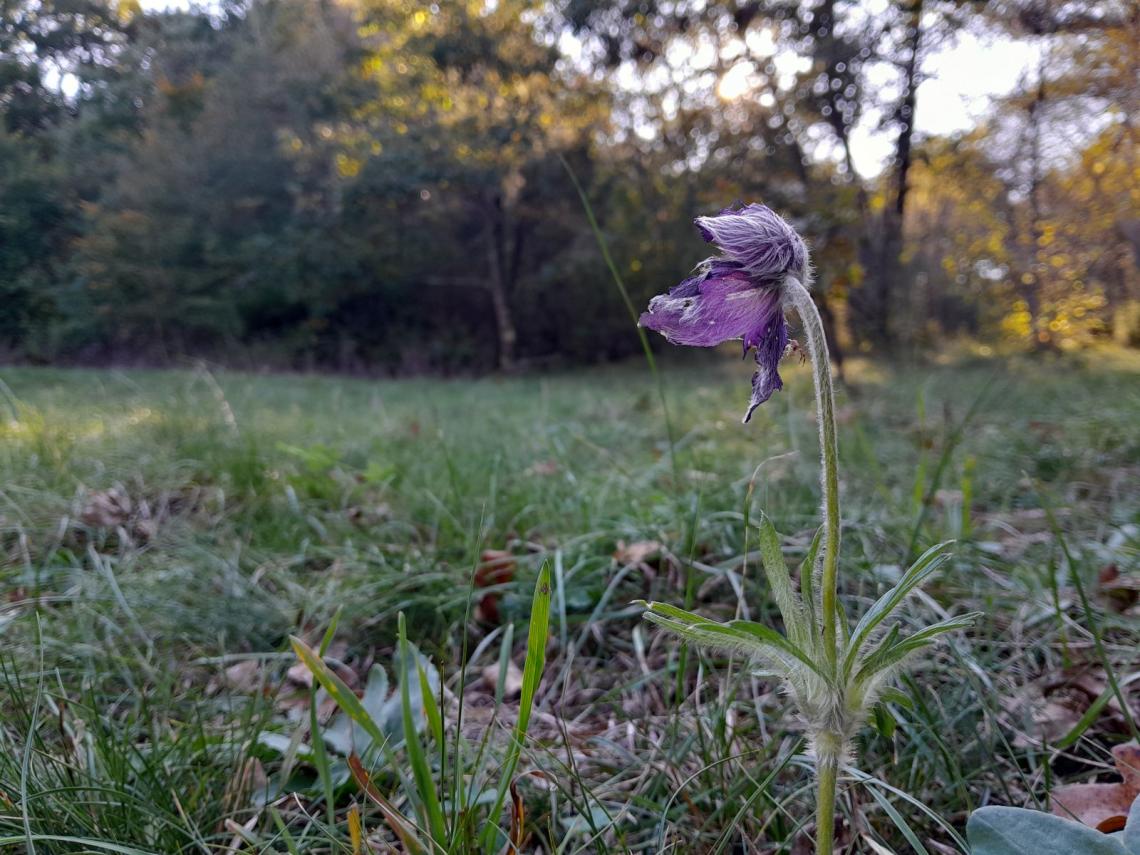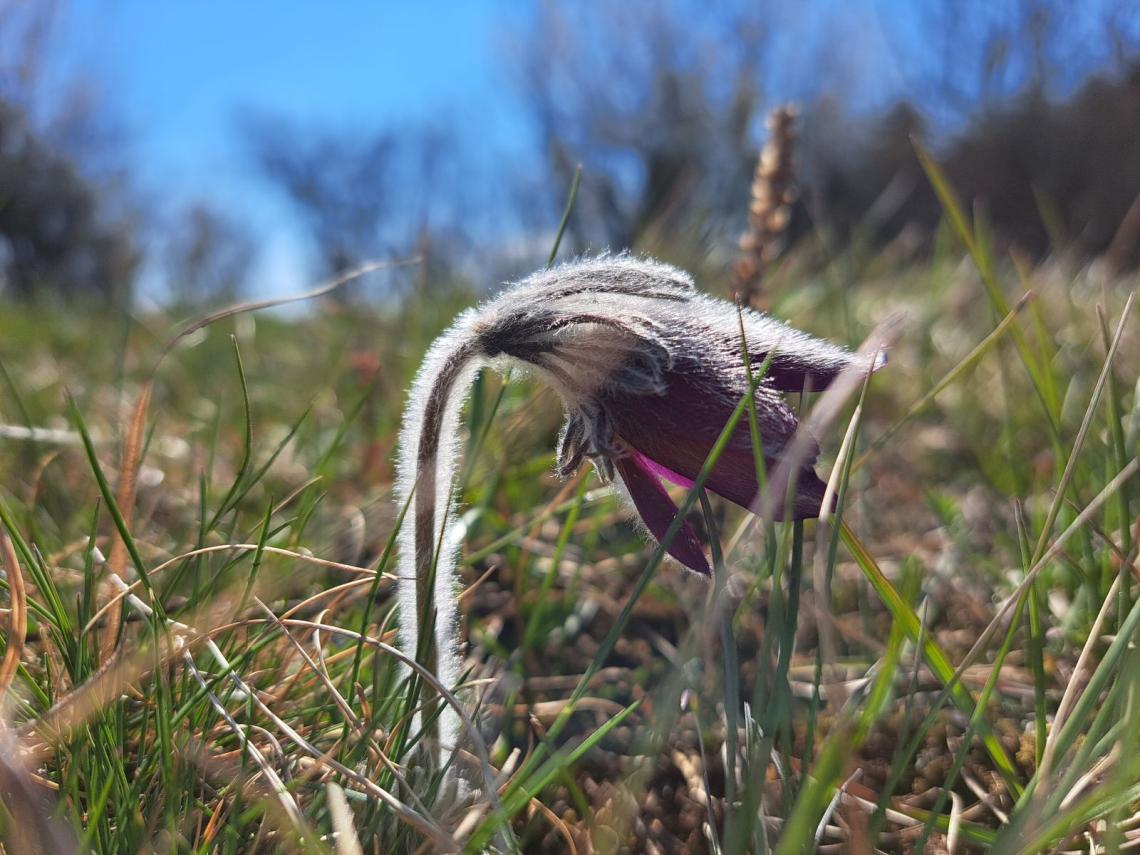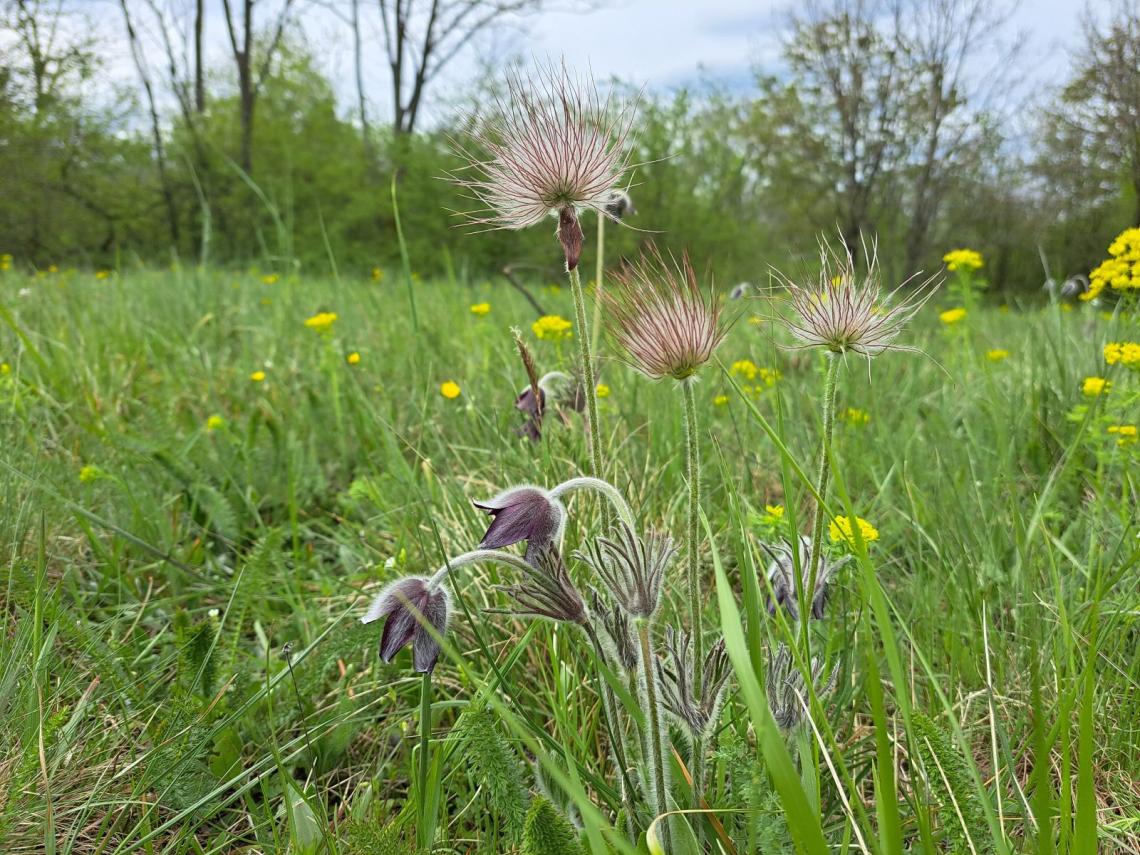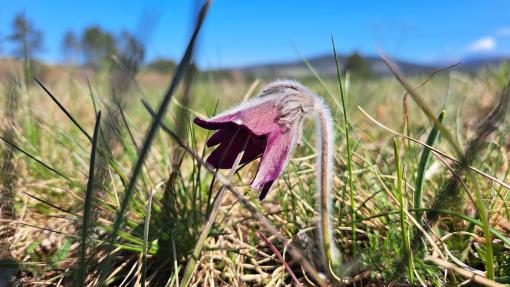
While carrying out vegetation surveys near Naklo (municipality of Divača) last October, we had a delightful encounter with a reblooming mountain pasqueflower (Pulsatilla montana). The flowering season for this relative of the greater pasque flower (P. grandis) peaks in draughty early April. Wandering through bora-lashed grasslands under Vremščica, elsewhere in the Karst or in some places in Notranjska, you may, then, at first count one, two ... three droopy black-purple and rather hairy flowers hiding among the grasses. They are difficult to spot – that is, until your eyesight adjusts. Then you start spotting clusters of this protected species as far as the eye can see.

In order to avoid frost damage flowering this early in season, pasqueflowers are all-over covered with dense hairs (except inside the flower), maintaining a barrier layer of warmer air next to the surface. You can imagine it similar to Kosovel's small coat, except for the fact that pasqueflower's coat is not woven of words:
I'd like to walk
in a small coat
of words.
But beneath it let reside
a warm and bright world.
What is prosperity?
And what is the splendour?
For me is but one:
I have a small coat
and that coat resembles
none.

The genus' core distribution is in the steppes of eastern Europe and central Asia. Not unlike feather grasses', pasqueflower's diaspores are dispersed by wind. Since their feathery appendage is, compared to feather grasses', rather modest, they are carried across much shorter distances (up to 15 m in the open). In May and June, you might come across the fruiting plants that resemble frizzy pom-poms.

